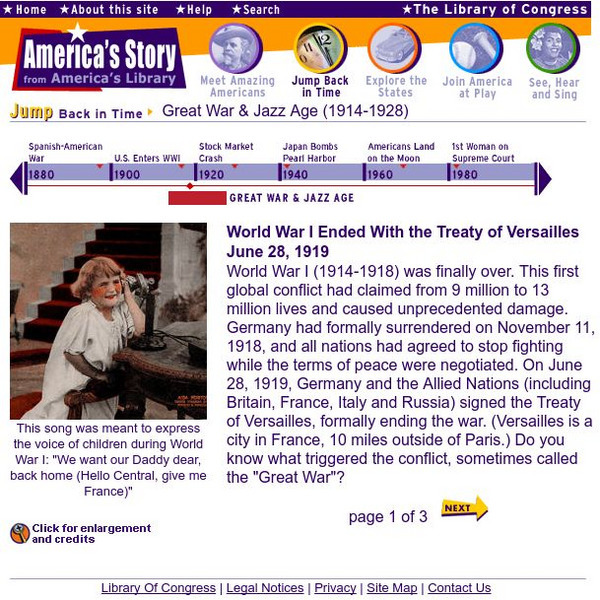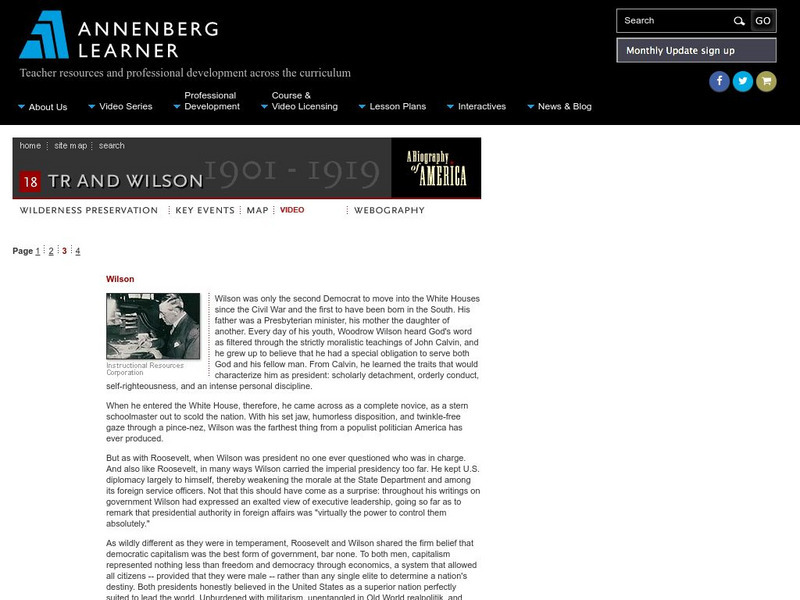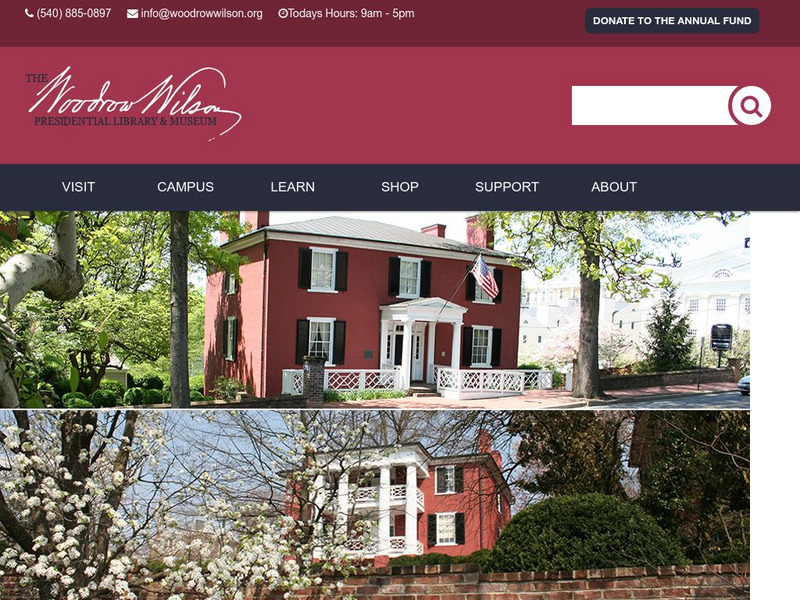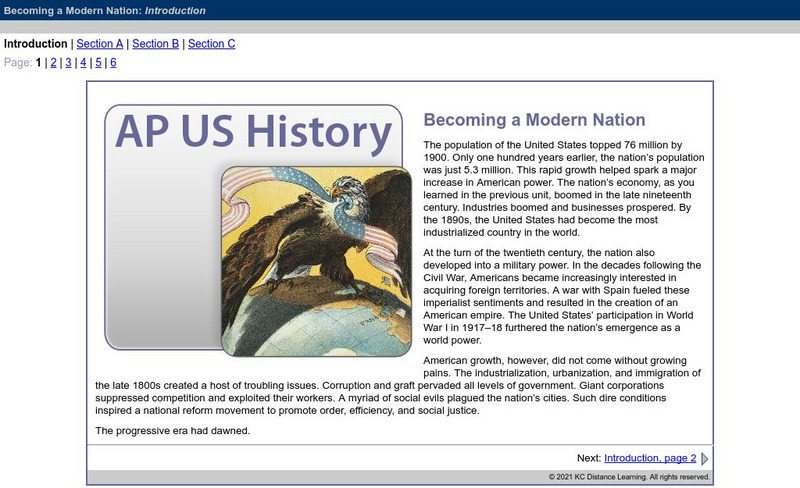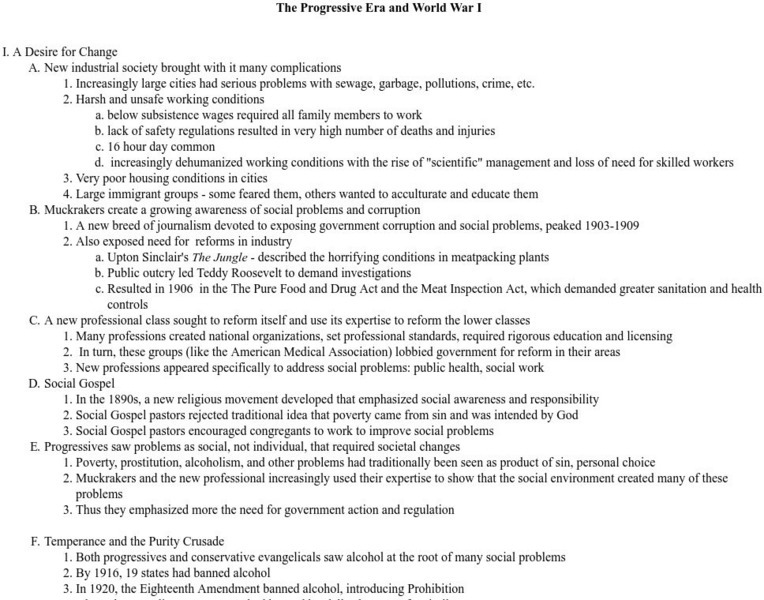Curated OER
Selling Warfare - Propaganda Posters
Students examine the use and purpose of propaganda posters during World War I. They work in groups to create a propaganda poster supporting a nation's war effort.
Curated OER
Reconstruction Word Search Puzzle
In this social studies worksheet, students look for the words in the puzzle that are related to the theme of the word search. Spelling skills are worked on.
Digital History
Digital History: The Fourteen Points and the Versailles Treaty [Pdf]
President Woodrow Wilson, in his hope that World War I was the war to end all wars, issued his Fourteen Points almost one year before the end of the war as a bluepoint to guarantee peace across the world. Read a summary of the points and...
National Endowment for the Humanities
Neh: Edsit Ement: Woodrow Wilson and Foreign Policy
A thorough review of Woodrow Wilson's foreign policies in these four lessons offered by EDSITEment. Learn the origins of "Wilsonianism," Wilson's views on relations with countries in Latin America, Wilson's decision to enter World War I,...
Then Again
Then Again: Web Chron: United States of America Chronology: Wilson's Fourteen Points
A summary of what President Wilson's Fourteen Points were. Provides a brief discussion of why the 14th point was the most controversial.
Khan Academy
Khan Academy: Ap Us History: 1890 1945: The Us in Wwi: The Treaty of Versailles
Looks at the Treaty of Versailles, what its terms were, why America never ratified it or joined the League of Nations, why Germans grew to resent the burdens it imposed on them, and how this contributed to Hitler's rise to power....
National Endowment for the Humanities
Neh: Edsit Ement: The Great War: Evaluating the Treaty of Versailles
In this lesson plan, students will consider "The Great War: Evaluating the Treaty of Versailles." The plan includes worksheets and other student materials that can be found under the resource tab.
Library of Congress
Loc: America's Story: Ww I Ended, Treaty of Versailles
This site describes how the Treaty of Versailles ended World War I. Includes photos.
PBS
Wnet: Thirteen: Freedom: A History of Us: The Peacemaker
Explore how President Wilson, in his Fourteen Points, urged peace without revenge European self-determination, and the establishment of a peace-keeping League of Nations politicians both abroad and at home rejected his plans.
PBS
Wnet: Thirteen: Freedom: History of Us: Safe for Democracy?: Wilson's 14 Points [Pdf]
A lesson plan from the producers of the 16-episode PBS series "Freedom: A History of US" that directs students to examine Woodrow Wilson's Fourteen Points. They will discuss how Wilson's plan and the establishment of the League of...
Digital History
Digital History: Woodrow Wilson and the League of Nations [Pdf]
President Woodrow Wilson had great hopes that a League of Nations would mean that there would be no more world wars. Read about the charter for the League of Nations, especially Article X, which provided the teeth for the organization....
Annenberg Foundation
Annenberg Learner: A Biography of America: Woodrow Wilson
Discover what made Woodrow Wilson a powerful president in this biographical account.
The History Cat
The History Cat: Treaty of Versailles: Peace Returns
Describes what happened at the end of World War I - the celebrations and the unnecessary final battles - as the Big Four (France, Britain, the United States, and Italy) sat down to begin negotiations for the Treaty of Versailles....
Siteseen
Siteseen: American Historama: 1919 Treaty of Versailles
Provides a summary and interesting facts about the Treaty of Versailles, the treaty that punished Germany for the cost and damages of WWI.
Independence Hall Association
U.s. History: The Treaty of Versailles and the League of Nations
President Wilson lobbied for a "just peace" for the end of World War I. Read about his Fourteen Points that he thought would accomplish this. See how his plans for a League of Nations and the final terms of the Treaty of Versailles...
Other
Woodrow Wilson Presidential Library & Museum: The Fourteen Points
Learn about President Wilson's controversial Fourteen Point blueprint for world peace that became the basis for the Treaty of Versailles following World War I.
OpenStax
Open Stax: Americans and the Great War 1914 1919: From War to Peace
Examines how the United States contributed during the final stages of World War I, what Woodrow Wilson believed the world should look like after the war, and why the United States did not sign the Treaty of Versailles or join the League...
Utah Education Network
Uen: Themepark: Liberty: World War I
Find a large collection of internet resources organized around World War I. Links to places to go, people to see, things to do, teacher resources, and bibliographies.
Tom Richey
Tom Richey: World War I for u.s. History
This slideshow will explore the reasons the United States joined into fighting during World War I. Explore the role Woodrow Wilson had during the war, the Treaty of Versailles, and the creation of the League of Nations.
Raleigh Charter High School
Mrs. Newmark's Page: World War One
This quiz will test your knowledge on WWI primarily information about President Wilson's actions during the war.
Ohio History Central
Ohio History Central: Newton D. Baker
An interesting biography of Newton D. Baker, President Wilson's Secretary of War.
Department of Defense
Do Dea: Ap Us History: Unit 6: Becoming a Modern Nation
This extensive learning module examines the role of large-scale industrialization, urbanization, and mass migrations in creating new demands on government and social organizations to design reforms, and looks at the global and domestic...
Other
Tsu: The Progressive Era and World War I
A comprehensive outline covering the major ideas, leaders, and actions of the Progressive Era and the transformation of the United States as a result of World War I.
University of Groningen
American History: Outlines: The League of Nations
Overivew of the end of World War I, the Treaty of Versailles and the League of Nations.




![Digital History: The Fourteen Points and the Versailles Treaty [Pdf] Website Digital History: The Fourteen Points and the Versailles Treaty [Pdf] Website](https://d15y2dacu3jp90.cloudfront.net/images/attachment_defaults/resource/large/FPO-knovation.png)




